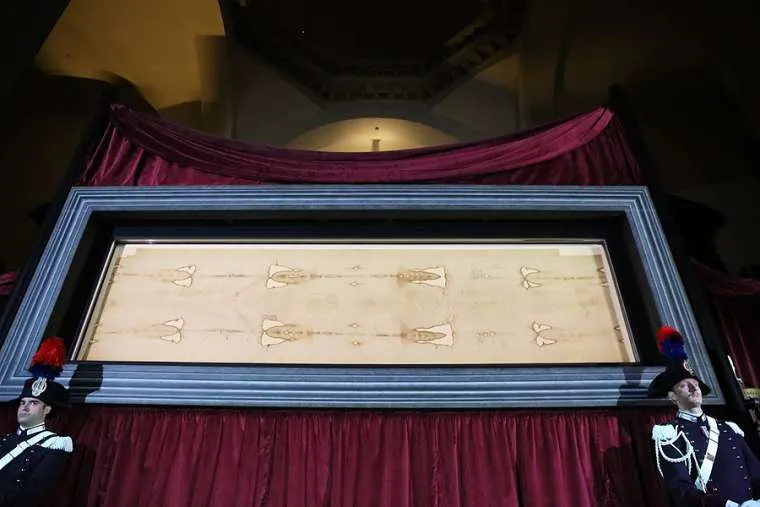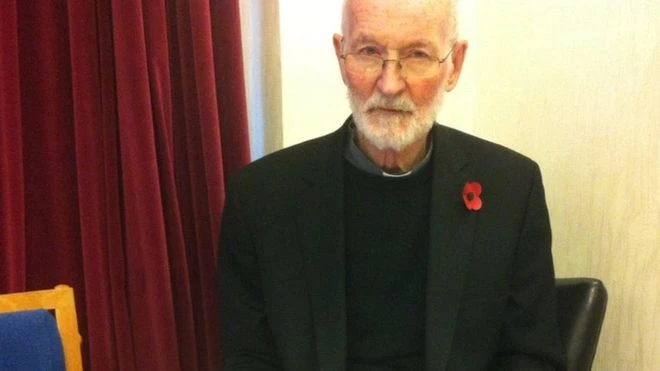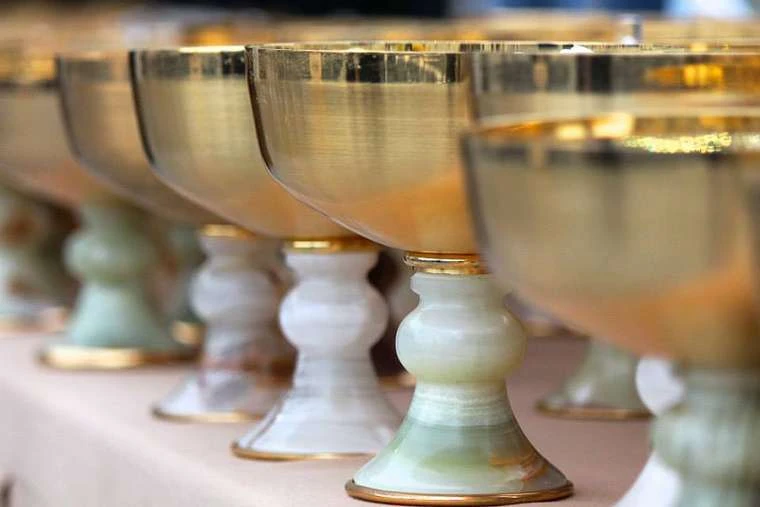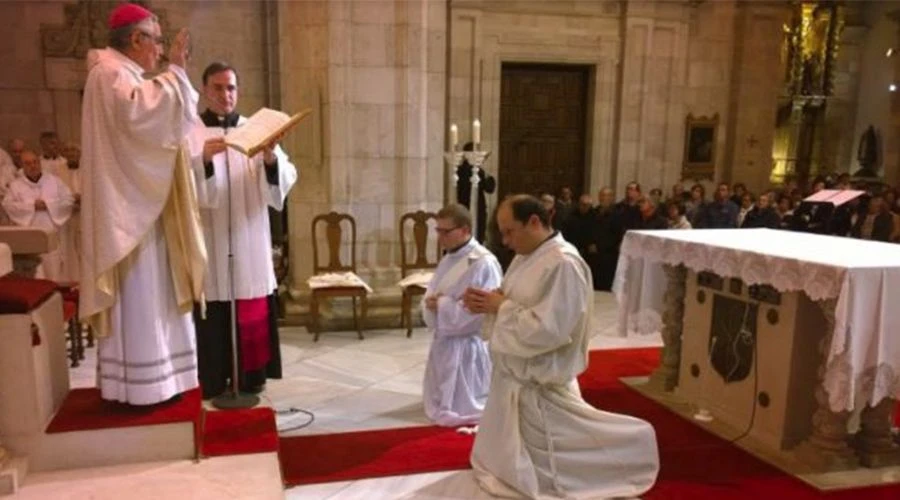
Rome, Italy, Jul 18, 2018 / 02:56 pm (CNA/EWTN News).- A study on the Shroud of Turin based on bloodstain pattern analysis used to investigate crime scenes has sparked fresh debate on what is believed to be Christ’s burial cloth, saying the marks left by the blood flow are not authentic.
The study, “A BPA Approach to the Shroud of Turin,” was published July 10 in the Journal of Forensic Sciences.
In comments to CNA, the leading author, Dr. Matteo Borrini, said that after doing extensive experiments, the results show that bloodstains flowing from Christ’s wrists and a spot where he was stabbed in the side with a spear “are not the blood stains of a man who was crucified.”
The stains “are not realistic” in terms of the direction blood would flow from those type of wounds, he said, adding that he believes that “the stains were done artificially.”
Professor Paolo Di Lazzaro, the director of research at the International Center of Sindonology in Turin, said Borrini’s methods, while sound, would require more time and “specific attention” to details in order to be “scientifically valid and authoritative.”
Archbishop Cesare Nosiglia of Turin noted that the study “does not affect the spiritual and religious meaning of the shroud as an icon of the Passion and death of the Lord,” adding that “no one can deny the evidence that contemplating the shroud is like reading the pages of the Gospel tells us about the Passion and death of the Son of God.”
Borrini, a forensic anthropologist teaching at the Faculty Science of the the School of Natural Sciences and Psychology at the John Moores University in Liverpool, is Catholic and is an expert in bloodstain pattern analysis.
Borrini collaborated in his research with Luigi Garlaschelli, a chemist and professor at the University of Pavia, who is also a member of the sceptic educational organization the Italian Committee for the Investigation of Claims of the Pseudosciences.
Based on BPA (bloodstain pattern analysis) tactics used to analyze the shape and flow of bloodstains on objects, clothing or bodies involved in a crime scene, the study is the first to apply BPA techniques to the Shroud of Turin.
Among the most well-known artifacts believed to be connected with Christ’s Passion, the Shroud of Turin has been venerated for centuries by Christians as the burial shroud of Christ, and has long been subject to intense scientific study to ascertain its authenticity, and the origins of the image.
Appearing on the 14-foot long, three-and-a-half foot wide cloth a faintly stained postmortem image of a man – front and back – who has been brutally tortured. The image becomes clear in a haunting photo negative.
It has been venerated by thousands of pilgrims and numerous popes.
Borrini and Garlaschelli first presented their study at the 2014 meeting of the American Academy of Forensic Sciences.
The study was then read by a panel of anonymous experts in the field, who commented on the research and offered suggestions. The two were then required to respond to the comments made as part of their formal article on the study, which was reviewed by the same anonymous panel before its publication last week.
As part of their research, Borrini and Garlaschelli conducted numerous experiments on both live human volunteers and mannequins using BPA methods, which use geometrical techniques to reconstruct the angle of the splatter from each drop of blood when it meets a surface.
This method “is only physical, and morphological,” Borrini said, explaining that it focuses on “the study of the pattern, the shape, of the bloodstain and the distribution of the bloodstains; the physical, geometric distribution.”
“We tried to recreate the flow of the blood and the dripping of the blood from a wound. In this case, the wound from the wrist created by the nails, or the blood from the wound on the side, the wound that was directly done by the spear that was used on the torso of Jesus Christ according to the Gospels. So we reproduced the blood flowing from these two different wounds,” he said.
To track the blood flow, they used a device created to represent arteries and veins which had been damaged by a nail during a crucifixion, and analyzed what direction the liquid, which represented blood, would go and what pattern it would make.
While some might argue that the speed of blood flow or a person’s health might impact the pattern of the stain, Borrini said that in this case, only the direction matters.
“If the blood were dripping slower or faster, this would not affect the direction,” he said. “The direction of the blood flow is affected by the position of the body and of course by gravity, because of course, any liquids or solids move according to gravity, so they have to follow the law of gravity.”
This “is why we realized there was an inconsistency in some of the stains, because some of the stains apparently did not follow gravity.” For example, Borrini said some of the results showed that the man whose image is imprinted on the shroud would have had to be standing vertical, rather than horizontal, for the blood flow patterns to make sense.
“For me the shroud is not authentic,” he said, but stressed that he is a Catholic who has taught at several pontifical universities, “and I maintain that we do not need the shroud in order to be Christians, to be Catholic.”
“I did this study, I reached this conclusion, and I feel absolutely in line with the thought of the Catholic Church, and I continue to be strong in my Catholic faith.”
“If someone thinks that I did this work because I am an atheist, it is absolutely untrue,” he said, explaining that the study was balanced, because while he is Catholic, Garlaschelli, his research partner, is an atheist.
However, despite Borrini’s insistence on the validity of his scientific research, the results of his study were met with criticism.
Di Lazzaro noted that studies with live human volunteers usually take place on people who are healthy and clean, he said, noting that blood might flow differently on someone who is dirty and who has been sweating, or who has been dehydrated.
“It is not possible to think of reproducing realistic conditions of the way blood drips on the body of a crucifix without considering all of these factors, which influence in a strong way how blood drips,” he said.
Archbishop Nosiglia said numerous studies have been done which either prove or disprove the authenticity of the shroud. However, regardless of the outcome, the archbishop said the guiding principle of any research ought to be “neutrality.”
“If one begins with a preconception and directs the research toward proving it, then it will easily be confirmed”, he said, adding that operating on the basis of a preconception “nullifies the neutrality proper to science with respect to personal convictions.”
“The shroud, which is an object of faith, helps faith itself because it opens the hearts of those who approach and contemplate it to be aware of what was the Passion of Jesus on the cross and therefore of the greatest love that he showed us by suffering terrible physical and moral violence for the salvation of the whole world.”
This, he said, is the reason that millions of people, both now and in the past, have to the shroud from all over the world to venerate it and to pray, in order to “draw hope for their everyday life.
 […]
[…]







